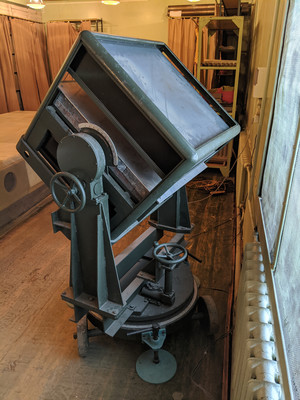|
POLAR GEOPHYSICAL INSTITUTE, APATITY, RUSSIA |
|
| |
At the cosmic ray station at the Polar Geophysical Institute, a simple, compact and movable muon telescope (MT) has been developed and created. Purpose of the MT is expanding the energy range of cosmic ray monitoring to hundreds of GeV. In addition, the muon detector directly measures the charged component of secondary cosmic rays: electrons, positrons and muons.
The simplicity of the design of the device is due to both the use of off-the-shelf modules and the small effective square of the detectors. However, the size of the detectors is sufficient to provide 5-minute data with suitable accuracy. The device fixes the charged particle flux (first of all muons, but also electrons, positrons and gamma rays) which is generated in the atmosphere by primary cosmic rays.
The MT consists of two plastic scintillators separated by a lead layer. The size of one scintillator is 500☓500☓50 mm (0.25 m²). They are placed one above the other at 500 mm distance. A thick layer of lead (100 mm), composed of standard lead bricks (200☓100☓50 mm), is placed between them. The cross-size of the lead layer is 750☓750 mm.
The MT is mounted on a turntable system having two axes of rotation. Using this platform, one can orient the axis of the telescope in any direction within the upper hemisphere. The telescopic placement of the detectors allows to narrow the solid angle of acceptance. It is about 45° solid angle in this design. The output signals are the output of the upper detector, lower detector and the coincidence of the upper and lower ones (telescope). The upper one detects all charged particles, include electrons and positrons, coming from the upper hemisphere, as well as gamma rays. The lower energy threshold is determined based on the calculation of the amount of the substance which is above the detector (cover and frame). It is about 3-5 MeV. The coincidence scheme selects only muons flux with energies > 250 MeV. Thus, this design of a charged particle detector combines an omnidirectional detector of soft charged particles and gamma rays and a simple unit of muon telescope.
The method of converting the count rate of detectors into units of radiation flux, which is necessary in order to compare the obtained values with the modeling data, is described here (in Russian).
|
|
| |
|
|
| |
 |
The creation of the muon telescope is supported by the grant of Russian Science Foundation (project №18-77-10018) |
|
|



